 After a week of turmoil in Cyprus (see the News item Ochi, ochi, ochi) a deal has been struck between Cyprus, the EU and the IMF over a €10bn bailout for the island’s banking system. But while the deal may bring the immediate crisis to an end, the Cypriot economy could face years of austerity and depression. And there remain questions over whether the deal sends the wrong message to depositors in banks in other eurozone countries whose banking systems are under pressure.
After a week of turmoil in Cyprus (see the News item Ochi, ochi, ochi) a deal has been struck between Cyprus, the EU and the IMF over a €10bn bailout for the island’s banking system. But while the deal may bring the immediate crisis to an end, the Cypriot economy could face years of austerity and depression. And there remain questions over whether the deal sends the wrong message to depositors in banks in other eurozone countries whose banking systems are under pressure.
Unlike the original EU proposal, the deal will not impose a levy on deposits under €100,000, much to the relief of small and medium depositors. But individuals and businesses with deposits over €100,000 in the two main troubled banks (Laiki and the Bank of Cyprus) will face losses that could be as high as 40%. The precise size will become clear in the coming days.
The troubled second largest bank, Laiki (Popular) Bank, will be split into a ‘good’ and a ‘bad’ bank. The assets and liabilities of the good part will be taken over by the largest bank, the Bank of Cyprus. Thus people’s accounts under €100,000 will be moved from one to the other. The ‘bad’ part will include deposits over €100,000 and bonds. Holders of these could lose a substantial proportion of their value.
 Many businesses will be hard hit and may be forced to close. This could have serious adverse multiplier effects on the economy. These effects will be aggravated by the fiscal austerity measures which are also part of the deal. The measures are also likely to discourage further inward investment, again pushing the economy further into recession.
Many businesses will be hard hit and may be forced to close. This could have serious adverse multiplier effects on the economy. These effects will be aggravated by the fiscal austerity measures which are also part of the deal. The measures are also likely to discourage further inward investment, again pushing the economy further into recession.
And then there are the broader effects on the eurozone. The direct effect of a decline in the Cypriot economy would be tiny; the Cypriot economy accounts for a mere 0.2% of eurozone GDP. Also the effect on small savers in other eurozone countries is also likely to be limited, as people will probably be reassured that savings under €100,000 have remained protected, even in an economy as troubled as Cyprus.
But some commentators argue that the effect on large depositors in other troubled eurozone countries, such as Portugal, Spain, Greece and Italy, could be much more serious. Would people with large balances in these countries prefer to move their money to, say, Germany, or even out of the eurozone altogether? There is clearly disagreement over this last point as you will see from the articles below.
Webcasts and Podcasts
 Cyprus agrees bailout with eurozone ministers The Guardian (25/3/13)
Cyprus agrees bailout with eurozone ministers The Guardian (25/3/13)
 Cyprus bailout: Deal reached in Eurogroup talks BBC News (25/3/13)
Cyprus bailout: Deal reached in Eurogroup talks BBC News (25/3/13)
 ‘Disaster avoided’ as Cyprus agrees EU bailout deal Euronews (25/3/13)
‘Disaster avoided’ as Cyprus agrees EU bailout deal Euronews (25/3/13)
 Cyprus saved from bankruptcy Channel 4 News on YouTube, Faisal Islam (25/3/13)
Cyprus saved from bankruptcy Channel 4 News on YouTube, Faisal Islam (25/3/13)
 What are the implications of the Cyprus deal? BBC Radio 4 Today Programme, Stephanie Flanders (25/3/13)
What are the implications of the Cyprus deal? BBC Radio 4 Today Programme, Stephanie Flanders (25/3/13)
 Cyprus bailout deal: Russia riled but Germany relieved BBC News, Steve Rosenberg in Moscow and Stephen Evans in Berlin (25/3/13)
Cyprus bailout deal: Russia riled but Germany relieved BBC News, Steve Rosenberg in Moscow and Stephen Evans in Berlin (25/3/13)
 Cyprus bailout deal ‘durable’ says IMF chief BBC News, Christine Lagarde (25/3/13)
Cyprus bailout deal ‘durable’ says IMF chief BBC News, Christine Lagarde (25/3/13)
 Cyprus Bailout Deal Raises Questions: Lombardi Bloomberg, Domenico Lombardi (25/3/13)
Cyprus Bailout Deal Raises Questions: Lombardi Bloomberg, Domenico Lombardi (25/3/13)
 Minister Michalis Sarris: Cyprus paying ‘tremendous cost’ BBC Radio 4 Today Programme, Michalis Sarris (26/3/13)
Minister Michalis Sarris: Cyprus paying ‘tremendous cost’ BBC Radio 4 Today Programme, Michalis Sarris (26/3/13)
Articles
Last-minute Cyprus deal to close bank, force losses Reuters, Jan Strupczewski and Annika Breidthardt (25/3/13)
Cyprus strikes last-minute EU bailout deal The Guardian, Ian Traynor (25/3/13)
‘There is no future here in Cyprus’ The Telegraph, Nick Squires (25/3/13)
Back from the brink: EU ministers approve €10bn bailout deal at 11th-hour to save Cyprus Independent, Charlotte McDonald-Gibson and Majid Mohamed (25/3/13)
Cyprus bailout: Deal reached in Eurogroup talks BBC News (25/3/13)
Q&A: Cyprus deal BBC News (25/3/13)
The rescue of Cyprus won’t feel like one to its people BBC News, Robert Peston (25/3/13)
Lessons of Cyprus BBC News, Stephanie Flanders (25/3/13)
Cyprus bailout: Dijsselbloem remarks alarm markets BBC News (25/3/13)
Cyprus saved – but at what cost? The Guardian, Helena Smith (25/3/13)
Cyprus bail-out: savers will be raided to save euro in future crisis, says eurozone chief The Telegraph, Bruno Waterfield (25/3/13)
Cyprus’s banks have been tamed – are Malta and Luxembourg next? The Guardian, Ian Traynor (25/3/13)
Lehman lessons weigh on Cyprus talks but 1920s slump must not be ignored The Guardian, Larry Elliott (24/3/13)
Questions
- Explain what is meant by ‘moral hazard’. What moral hazards are implicit in the deal that has been struck with Cyprus?
- How does the size of the banking system in Cyprus as a proportion of GDP differ from that in other troubled eurozone countries? How does this affect the ‘contagion’ argument?
- Does the experience of Iceland and its troubled banks suggest that the Cypriot problem has nothing to do with its being in the eurozone?
- What options are open to the Cypriot government to stimulate the economy and prevent a severe recession? How realistic are these options (if any)?
- What are the likely implications of the deal for the economic relationships (as opposed to the political ones) between Cyprus and Russia and between the eurozone and Russia?
- Are there any similarities in the relationships between the weak and strong eurozone countries today and those between Germany and other countries in the 1920s and 30s?
 The UK economy is suffering from a lack of aggregate demand. Low spending in real terms is preventing the economy from growing. A simple solution would seem to be to stimulate aggregate demand through fiscal policy, backed up by even looser monetary policy. But this is easier said than done and could result in undesirable consequences in the medium term.
The UK economy is suffering from a lack of aggregate demand. Low spending in real terms is preventing the economy from growing. A simple solution would seem to be to stimulate aggregate demand through fiscal policy, backed up by even looser monetary policy. But this is easier said than done and could result in undesirable consequences in the medium term.
If increased borrowing were to be used to fund increased government expenditure and/or cuts in taxes, would any resulting growth be sufficient in the medium term to reduce the public-sector deficit below the initial level through automatic fiscal stabilisers? And would the growth be sustainable? The answer to this second question depends on what happens to the supply side of the economy. Would there be an increase in aggregate supply to match the increase in aggregate demand?
 This second question has led many economists to argue that we need to see a rebalancing of the economy. What is needed is an increase in investment and exports, rather than an increase in just consumer expenditure funded by private borrowing and government current expenditure funded by public borrowing.
This second question has led many economists to argue that we need to see a rebalancing of the economy. What is needed is an increase in investment and exports, rather than an increase in just consumer expenditure funded by private borrowing and government current expenditure funded by public borrowing.
But how will exports and investment be stimulated? As far as exports are concerned, it was hoped that the depreciation of the pound since 2008 would give UK exporters a competitive advantage. Also domestic producers would gain a competitive advantage in the UK from imports becoming more expensive. But the current account deficit has actually deteriorated. According to the EU’s AMECO database, in 2008 the current account deficit was 1% of GDP; in 2012 it was 3.7%. It would seem that UK producers are not taking sufficient advantage of the pound’s depreciation, whether for exports or import substitutes.
 As far as investment is concerned, there are two major problems. The first is the ability to invest. This depends on financing and things such as available land and planning regulations. The second is the confidence to invest. With not little or no growth in consumer demand, there is little opportunity for the accelerator to work. And with forecasts of sluggish growth and austerity measures continuing for some years, there is little confidence in a resurgence in consumer demand in the future. (Click here for a PowerPoint of the above chart. Note that the 2013 plots are based on AMECO forecasts.)
As far as investment is concerned, there are two major problems. The first is the ability to invest. This depends on financing and things such as available land and planning regulations. The second is the confidence to invest. With not little or no growth in consumer demand, there is little opportunity for the accelerator to work. And with forecasts of sluggish growth and austerity measures continuing for some years, there is little confidence in a resurgence in consumer demand in the future. (Click here for a PowerPoint of the above chart. Note that the 2013 plots are based on AMECO forecasts.)
So hope of a rebalancing is faint at the current time. Hence the arguments for an increase in government capital expenditure that we looked at in the last blog post (The political dynamite of calm economic reflection). The problem and the options for government are considered in the following articles.
Articles
Budget 2013: Chancellor’s rebalancing act BBC News, Stephanie Flanders (11/3/13)
Why George Osborne is failing to rebalance the economy The Guardian, Larry Elliott (17/3/13)
Economy fails to ‘rebalance’ Financial Times, Sarah O’Connor (27/2/13)
Analysis – Long haul ahead for Britain’s struggling economy Reuters, William Schomberg (3/3/13)
Can banks be forced to lend more? BBC News, Robert Peston (12/3/13)
Budget 2013: What the commentators are saying BBC News (13/3/13)
Data
UK Trade, January 2013 (ONS) (12/3/13)
Business investment, Q4 2012 ONS (27/2/13)
Questions
- Draw a diagram to illustrate the effects of a successful policy to increase both aggregate demand and aggregate supply. What will determine the effect on the output gap?
- For what reasons has the UK’s current account deteriorated over the past few years while those of the USA and the eurozone have not?
- Using ONS data, find out what has happened to the UK’s balance of trade in (a) goods and (b) services over the past few years and explain your findings.
- Why are firms reluctant to invest at the moment? What policy measures could the government adopt to increase investment?
- With interest rates so low, why don’t consumers borrow and spend more, thereby aiding the recovery?
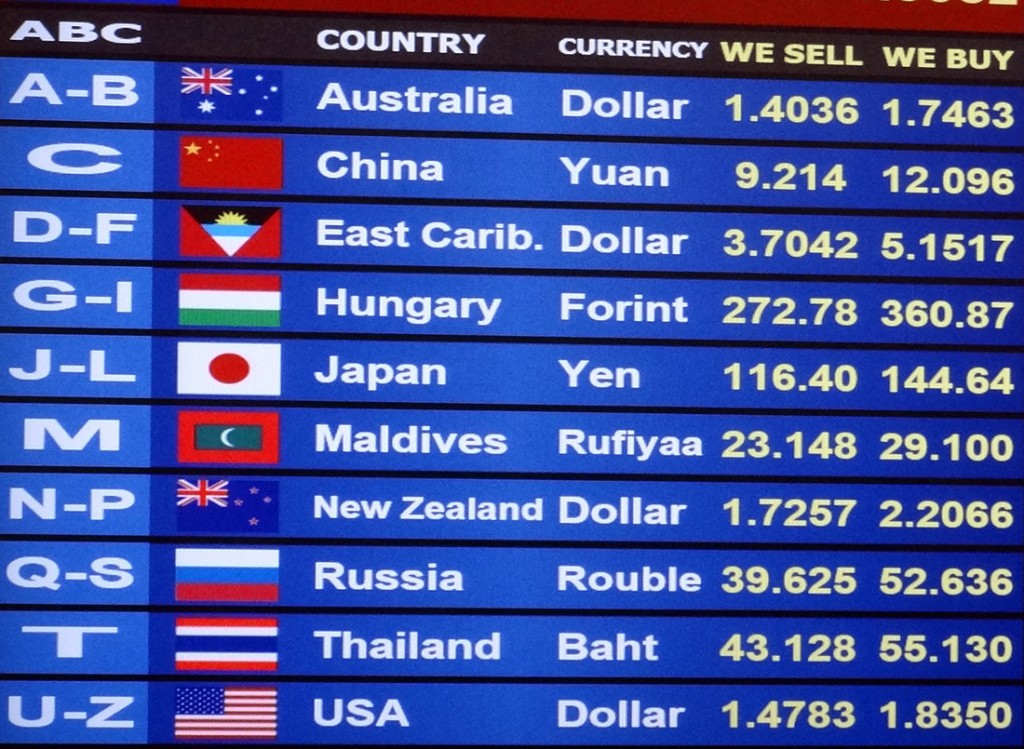 In light of the recent sharp decline in the British pound, this blog is an updated version of Appreciating a depreciating pound which was published in early December 2012. The significance of the depreciation should be seen in the context of the UK as an island-economy which makes trade an important determinant of our economic performance.
In light of the recent sharp decline in the British pound, this blog is an updated version of Appreciating a depreciating pound which was published in early December 2012. The significance of the depreciation should be seen in the context of the UK as an island-economy which makes trade an important determinant of our economic performance.
The competitiveness of our exports is, in part, affected by the exchange rate. Floating exchange rates are notoriously volatile. However, since the autumn of 2007 we have observed a significant depreciation of the UK exchange rate – a depreciation that seems to have found new momentum of late. A depreciation helps to make our exports more competitive abroad which might help to compensate for weak demand here in the UK.
Rather than look at the British pound (or any currency) against the many foreign currencies separately we can look at the average exchange rate against a whole bundle of currencies. The average rate is calculated by weighting the individual exchange rates by the amount of trade between Britain and the other countries. This trade-weighted exchange rate is known as the effective exchange rate.
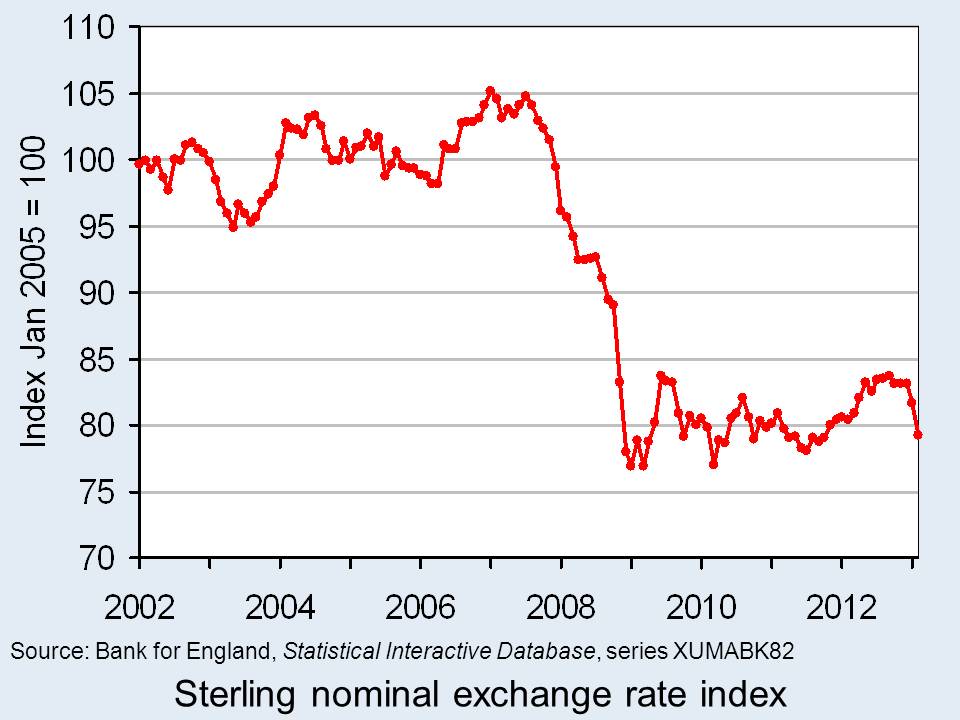
The chart shows the nominal (actual) effective exchange rate for the British pound since 2002. The chart shows clearly how from the autumn of 2007 the effective exchange rate began to fall sharply. Over the period from September 2007 to January 2009, figures from the Bank of England show that the nominal effective exchange rate fell by 25.3 per cent. In simple terms, the British pound depreciated by close to one-quarter. (Click here for a PowerPoint of the chart.)
If we move the clock forward, we observe an appreciation of the British pound between July 2011 (when its value was only 1.6 per cent higher than in January 2009) and September 2012. Over this period, the British pound appreciated by 7.2 per cent. Its value remained relatively stable through much of the remainder of last year. However, we appear to be on another downward path. If we compare the average value in February 2013 with the ‘high’ back in September 2012 we observe a depreciation of 5.4 per cent.
The British pound continues on its roller-coaster ride. Most commentators expect the British pound to fall further. Some see this as an important ingredient for a revival in British economic fortunes. If we compare September 2007 with February 2013, we find that the nominal effective exchange rate for the British pound is 23 per cent lower. This constitutes a major competitive boost for our exporters. However, an important question is whether there is a demand for these goods and services abroad however more attractive the depreciation makes them.
Data
Statistical Interactive Database – interest and exchange rate rates data Bank of England
BIS effective exchange rate indices Bank for International Settlements
Articles
Pound depreciates Vs dollar to lowest level since Aug 16 Bloomberg, Emma Charlton (5/2/13)
Pound advances against euro on Italy speculation; Gilts decline Bloomberg, Lucy Meakin and David Goodman (4/3/13)
Pounding of sterling risks a currency war Scotland on Sunday, Bill Jamieson (17/2/13)
Credit ratings, the pound, currency movements and you BBC News, Kevin Peachey (25/2/13)
The Bank of England can’t just go on doing down the pound Telegraph, Jeremy Warner (21/2/13)
 Sterling will continue to go down BBC News, Jim Rogers (25/2/13)
Sterling will continue to go down BBC News, Jim Rogers (25/2/13)
Questions
- Explain how the foreign demand for goods and assets generates a demand for British pounds. How will this demand be affected by the foreign currency price of the British pound, i.e. the number of foreign currency units per £1?
- Explain how the demand by British residents for foreign goods and assets generates a supply of British pounds. How will this supply be affected by the foreign currency price of the British pound, i.e. the number of foreign currency units per £1?
- What factors are likely to shift the demand and supply curves for British pounds on the foreign exchange markets?
- Illustrate the effect of a decrease in the demand for British goods and assets on the exchange rate (i.e. the foreign currency price of the British pound) using a demand-supply diagram.
- What is the difference between a nominal and a real effective exchange rate? Which of these is a better indicator of the competitiveness of our country’s exports
- What factors are likely to have caused the depreciation of the British pound in 2013?
 With many countries struggling to recover from the depression of the past few years, central banks are considering more and more doveish moves to kick-start lending. But with short-term interest rates in the USA, the UK and Japan close to zero, the scope for further cuts are limited. So what can central banks do?
With many countries struggling to recover from the depression of the past few years, central banks are considering more and more doveish moves to kick-start lending. But with short-term interest rates in the USA, the UK and Japan close to zero, the scope for further cuts are limited. So what can central banks do?
The first thing that can be done is to adopt a higher inflation target or to accept inflation above target – at least for the time being. This could be accompanied by explicitly targeting GDP growth (real or nominal) or unemployment (see the blog from last December, Rethinking central bank targets).
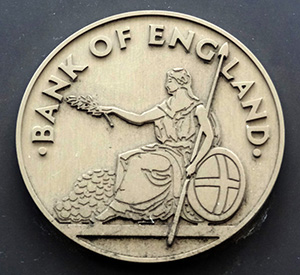 The second option is to increase quantitative easing. Although in a minority at the last MPC meeting, Mervyn King, the current Bank of England Governor, argued for a further £25 billion of asset purchases (bringing the total to £400bn) (see MPC minutes paragraph 39). It is highly likely that the MPC will agree to further QE at its next meeting in March. In Japan, the new governor of the Bank of Japan is expected to include asset purchases as part of the policy of monetary easing.
The second option is to increase quantitative easing. Although in a minority at the last MPC meeting, Mervyn King, the current Bank of England Governor, argued for a further £25 billion of asset purchases (bringing the total to £400bn) (see MPC minutes paragraph 39). It is highly likely that the MPC will agree to further QE at its next meeting in March. In Japan, the new governor of the Bank of Japan is expected to include asset purchases as part of the policy of monetary easing.
The third option is for the central bank to provide finance at below-market rates of interest directly to the banking sector specifically for lending: e.g. to small businesses or for house purchase. The Bank of England’s Funding for Lending Scheme is an example and the Bank is considering extending it to other financial institutions.
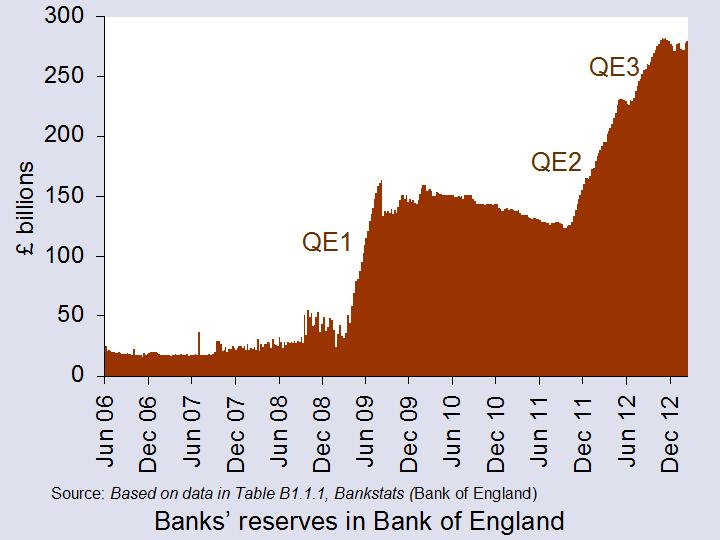 One other approach, mooted by the Bank of England’s Deputy Governor before the House of Commons Treasury Select Committee, is for negative interest rates paid on Banks’ reserves in the Bank of England. This would, in effect, be a fee levied on banks for keeping money on deposit. The idea would be to encourage banks to lend the money and not to keep excessive liquidity. As you can see from the chart, three rounds of quantitative easing have led to a huge increase in bank’s reserves at the Bank of England. (Click here for a PowerPoint of the chart.)
One other approach, mooted by the Bank of England’s Deputy Governor before the House of Commons Treasury Select Committee, is for negative interest rates paid on Banks’ reserves in the Bank of England. This would, in effect, be a fee levied on banks for keeping money on deposit. The idea would be to encourage banks to lend the money and not to keep excessive liquidity. As you can see from the chart, three rounds of quantitative easing have led to a huge increase in bank’s reserves at the Bank of England. (Click here for a PowerPoint of the chart.)
The following articles consider these various proposals and whether they will work to stimulate lending and thereby aggregate demand and economic recovery.
Central banks: Brave new words The Economist (23/2/13)
Phoney currency wars The Economist (16/2/13)
Analysis: Global central banks will keep taking it easy Reuters, Alan Wheatley (22/2/13)
Quantitative easing: the markets are struggling with a serious drug habi The Guardian, Larry Elliott (24/2/13)
Negative interest rates idea floated by Bank’s Paul Tucker BBC News (26/2/13)
Bank of England mulls negative interest rates Independent, Ben Chu (26/2/13)
BoE floats extending Funding for Lending to non-banks Mortgage Solutions, Adam Williams (26/2/13)
Funding for Lending Scheme failing to get banks lending Left Foot Forward, James Bloodworth (26/2/13)
Mortgage market boosted by lending schemes, says Redrow BBC News (26/2/13)
Widespread quantitative easing risks ‘QE wars’ and stagnation The Guardian, Nouriel Roubini (28/2/13)
Questions
- Consider each of the methods outlined above and their chances of success in stimulating aggregate demand.
- Go through each of the methods and consider the problems they are likely to create/have created.
- How important is it that monetary policy measures affect people’s expectations?
- What effects do the measures have on the distribution of income between borrowers and savers?
- What are annuities? How are these affected by policies of monetary easing?
- How has actual and anticipated Japanese monetary policy affected the exchange rate of the Japanese yen? How is this likely to affect the Japanese economy?
- Explain the sub-heading of the final article above, “When several major central banks pursue QE at the same time, it becomes a zero-sum game”. Do you agree?
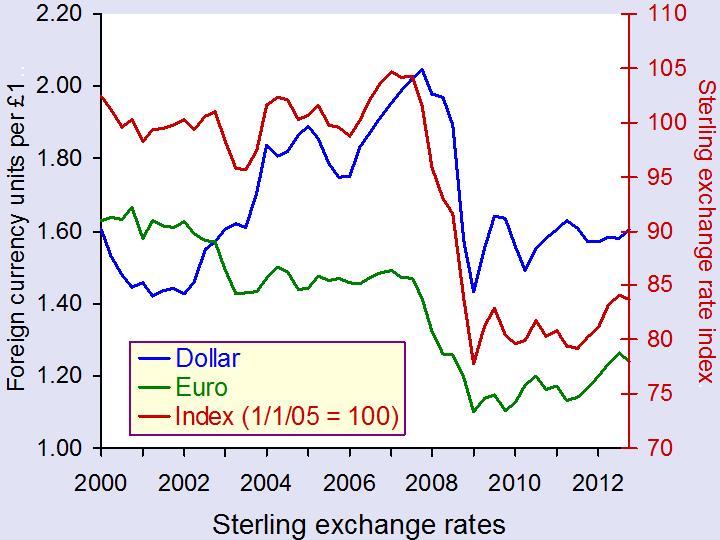 The exchange rate for sterling is determined in much the same way as the price of goods – by the interaction of demand and supply.
The exchange rate for sterling is determined in much the same way as the price of goods – by the interaction of demand and supply.
When factors change that cause residents abroad to want to hold more or fewer pounds, the demand curve for sterling will shift. If, instead, factors change that cause UK residents to want to buy more or less foreign currency, then the supply curve of sterling will shift. It is these two curves that determine the equilibrium exchange rate of sterling.
There are concerns at the moment that sterling is about to reach a peak, with expectations that the pound will weaken throughout 2013. But is a weakening exchange rate good or bad for the UK?
 With lower exchange rates, exports become relatively more competitive. This should lead to an increase in the demand for UK products from abroad. As exports are a component of aggregate demand, any increase in exports will lead to the AD curve shifting to the right and thus help to stimulate a growth in national output. Indeed, throughout the financial crisis, the value of the pound did fall (see chart above: click here for a PowerPoint) and this led to the total value of UK exports increasing significantly. However, the volume of UK exports actually fell. This suggests that whilst UK exporters gained in terms of profitability, they have not seen much of an increase in their overall sales and hence their market share.
With lower exchange rates, exports become relatively more competitive. This should lead to an increase in the demand for UK products from abroad. As exports are a component of aggregate demand, any increase in exports will lead to the AD curve shifting to the right and thus help to stimulate a growth in national output. Indeed, throughout the financial crisis, the value of the pound did fall (see chart above: click here for a PowerPoint) and this led to the total value of UK exports increasing significantly. However, the volume of UK exports actually fell. This suggests that whilst UK exporters gained in terms of profitability, they have not seen much of an increase in their overall sales and hence their market share.
Therefore, while UK exporters may gain from a low exchange rate, what does it mean for UK consumers? If a low exchange rate cuts the prices of UK goods abroad, it will do the opposite for the prices of imported goods in the UK. Many goods that UK consumers buy are from abroad and, with a weak pound, foreign prices become relatively higher. This means that the living standards of UK consumers will be adversely affected by a weak pound, as any imported goods buy will now cost more.
It’s not just the UK that is facing questions over its exchange rate. Jean-Claude Junker described the euro as being ‘dangerously high’ and suggested that the strength or over-valuation of the exchange rate was holding the eurozone back from economic recovery. So far the ECB hasn’t done anything to steer its currency, despite many other countries, including Japan and Norway having already taken action to bring their currencies down. Mario Draghi, the ECB’s president, however, said that ‘both the real and the effective exchange rate of the euro are at their long-term average’ and thus the current value of the euro is not a major cause for concern.
So, whatever your view about intervening in the market to steer your currency, there will be winners and losers. Now that countries are so interdependent, any changes in the exchange rate will have huge implications for countries across the world. Perhaps this is why forecasting currency fluctuations can be so challenging. The following articles consider changes in the exchange rate and the impact this might have.
A pounding for sterling in 2013? BBC News, Stephanomics, Stephanie Flanders (17/1/13)
UK drawn into global currency wars as slump deepens Telegraph, Ambrose Evans-Pritchard (16/1/13)
Foreign currency exchange rate predictions for GBP EUR, Forecasts for USD and NZD Currency News, Tim Boyer (15/1/13)
Euro still looking for inspiration, Yen firm Reuters (16/1/13)
Daily summary on USD, EUR, JPY, GBP, AUD, CAD and NZD International Business Times, Roger Baettig (16/1/13)
UK inflation bonds surge on Index as pound falls versus euro Bloomberg, Business News, Lucy Meakin (10/1/13)
Questions
- Which factors will cause an increase in the demand for sterling? Which factors will cause a fall in the supply of sterling?
- In the article by Stephanie Flanders from the BBC, loose monetary policy is mentioned as something which is likely to continue. What does this mean and how will this affect the exchange rate?
- Explain the interest- and exchange-rate transmission mechanisms, using diagrams to help your answer.
- If sterling continues to weaken, how might this affect economic growth in the UK? Will there be any multiplier effect?
- What is the difference between the volume and value of exports? How does this relate to profit margins?
- Why are there suggestions that the euro is over-valued? Should European Finance Ministers be concerned?
- Should governments or central banks intervene in foreign exchange markets?
- If all countries seek to weaken their currencies in order to make their exports more competitive, why is this a zero-sum game?
 After a week of turmoil in Cyprus (see the News item Ochi, ochi, ochi) a deal has been struck between Cyprus, the EU and the IMF over a €10bn bailout for the island’s banking system. But while the deal may bring the immediate crisis to an end, the Cypriot economy could face years of austerity and depression. And there remain questions over whether the deal sends the wrong message to depositors in banks in other eurozone countries whose banking systems are under pressure.
After a week of turmoil in Cyprus (see the News item Ochi, ochi, ochi) a deal has been struck between Cyprus, the EU and the IMF over a €10bn bailout for the island’s banking system. But while the deal may bring the immediate crisis to an end, the Cypriot economy could face years of austerity and depression. And there remain questions over whether the deal sends the wrong message to depositors in banks in other eurozone countries whose banking systems are under pressure. Many businesses will be hard hit and may be forced to close. This could have serious adverse multiplier effects on the economy. These effects will be aggravated by the fiscal austerity measures which are also part of the deal. The measures are also likely to discourage further inward investment, again pushing the economy further into recession.
Many businesses will be hard hit and may be forced to close. This could have serious adverse multiplier effects on the economy. These effects will be aggravated by the fiscal austerity measures which are also part of the deal. The measures are also likely to discourage further inward investment, again pushing the economy further into recession. Cyprus agrees bailout with eurozone ministers The Guardian (25/3/13)
Cyprus agrees bailout with eurozone ministers The Guardian (25/3/13) Cyprus bailout: Deal reached in Eurogroup talks BBC News (25/3/13)
Cyprus bailout: Deal reached in Eurogroup talks BBC News (25/3/13) ‘Disaster avoided’ as Cyprus agrees EU bailout deal Euronews (25/3/13)
‘Disaster avoided’ as Cyprus agrees EU bailout deal Euronews (25/3/13) Cyprus saved from bankruptcy Channel 4 News on YouTube, Faisal Islam (25/3/13)
Cyprus saved from bankruptcy Channel 4 News on YouTube, Faisal Islam (25/3/13) What are the implications of the Cyprus deal? BBC Radio 4 Today Programme, Stephanie Flanders (25/3/13)
What are the implications of the Cyprus deal? BBC Radio 4 Today Programme, Stephanie Flanders (25/3/13) Cyprus bailout deal: Russia riled but Germany relieved BBC News, Steve Rosenberg in Moscow and Stephen Evans in Berlin (25/3/13)
Cyprus bailout deal: Russia riled but Germany relieved BBC News, Steve Rosenberg in Moscow and Stephen Evans in Berlin (25/3/13) Cyprus bailout deal ‘durable’ says IMF chief BBC News, Christine Lagarde (25/3/13)
Cyprus bailout deal ‘durable’ says IMF chief BBC News, Christine Lagarde (25/3/13) Cyprus Bailout Deal Raises Questions: Lombardi Bloomberg, Domenico Lombardi (25/3/13)
Cyprus Bailout Deal Raises Questions: Lombardi Bloomberg, Domenico Lombardi (25/3/13) Minister Michalis Sarris: Cyprus paying ‘tremendous cost’ BBC Radio 4 Today Programme, Michalis Sarris (26/3/13)
Minister Michalis Sarris: Cyprus paying ‘tremendous cost’ BBC Radio 4 Today Programme, Michalis Sarris (26/3/13)








